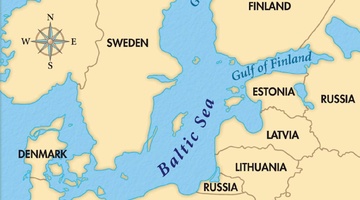Turkey’s youth population constitutes 15.3% of total population—statistical agency
Turkish Statistical Institute has issued the “Youth in Statistics, 2021” survey.

 Google News'te Doğruhaber'e abone olun.
Google News'te Doğruhaber'e abone olun. While the total population of Turkey was 84 million 680 thousand 273 by the end of 2021, the youth population in the age group of 15-24 was 12 million 971 thousand 289, according to the survey.
The youth population constituted 15.3% of the total population. While males constituted 51.3% of the youth population, females constituted 48.7% of it.
According to the population projections, the proportion of the youth population was expected to decrease to 14.3% in 2025, 14.0% in 2030, 13.4% in 2040, 11.8% in 2060, and 11.1% in 2080.
The province with the highest proportion of youth population with 22.8% was Hakkari
According to ABPRS results, the province with the highest proportion of youth population was Hakkari with 22.8% in 2021. Hakkari was followed by Şırnak with 22.1% and Siirt with 21.8%.
The provinces with the lowest proportion of youth population were Muğla with 12.3%. Muğla was followed by Tunceli and Balıkesir with 12.7%, respectively.
It was seen that 31.1% of the youth population was in the 20-22 age group
When the youth population was examined by age group, it was seen that 29.0% of the youth population was in the 15-17 age group, 19.0% in the 18-19 age group, 31.1% in the 20-22 age group and 20.9% in the 23-24 age group in 2021.
The proportion of married young women was about 4 times higher than those of young men
When the youth population was examined by legal marital status, it was seen that there was a significant difference between the sexes. While 96.2% of the young male population was never married, 3.8% of them were formally married, and 0.1% of them were divorced, it was seen that 84.9% of the young female population were never married, 14.7% of them were formally married and 0.4% of them was divorced in 2021.
The net enrollment rate in higher education for females was 48.5%
In Türkiye, while the net enrollment rate in higher education in the 2019/'20 educational year was 43.4%, this rate increased to 44.4% in the 2020/'21 educational year. When the net enrollment rate in higher education was analyzed by sex, while this rate for males decreased from 40.6% to 40.5%, for females it increased from 46.3% to 48.5%.
The proportion of young people who took part in neither education nor employment was 24.7%
According to the results of the household labor force survey, while the labor force participation rate for young people was 39.1% in 2020, it was 41.7% in 2021. While the labor force participation rate for young males was 50.1% in 2020, it was 53.1% in 2021. While this rate for young females was 27.5% in 2020, it was 29.7% in 2021.
While the unemployment rate for young people was 25.3% in 2020, it was 22.6% in 2021. While the unemployment rate for young males was 22.6% in 2020, it was 19.4% in 2021. While this rate for young females was 30.3% in 2020, it was 28.7% in 2021.
While the proportion of young people who took part in neither education nor employment was 28.3% in 2020, it was 24.7% in 2021. While the proportion of young males who took part in neither education nor employment was 21.2% in 2020, it was 17.5% in 2021. While this proportion for young females was 35.7% in 2020, it was 32.4% in 2021.
51.0% of employed young people took part in the service sector
According to the results of the household labor force survey, while the employment rate of young people was 29.2% in 2020, it increased to 32.2% in 2021. While the employment rate of young males was 38.8% in 2020, it was 42.8% in 2021. While the employment rate of young females was 19.2% in 2020, it was 21.2% in 2021.
While young employees were analyzed by sectors, it was seen that 18.2% of young people were employed in the agriculture sector, 30.8% in the industry sector and 51.0% of them were employed in the service sector in 2021. It was also seen that while 16.8% of young males took part in the agriculture sector, 35.4% in the industry sector and 47.7% of them were employed in the service sector, 21.0% of females took part in the agriculture sector, 21.0% in the industry sector and 58.0% of them were employed in the service sector.
The proportion of young people who dropped out of education despite wanting to continue was 7.6%
According to the results of the Turkey Family Structure Survey 2021, the proportion of young people in the 15-24 age group who left their education (including university) despite wanting to continue was 7.6%. While this proportion was 8.0% for young males, it was 7.1% for young females.
When the reasons for leaving the education of young people who dropped out of education were examined, the first rank was the economic reasons with 48.1%, followed by the failure in education with 23.6%, and the family's disapproval with 10.8%.
83.5% of young people declared that they were satisfied with their own health
According to the results of the life satisfaction survey, while the proportion of people who declared that they were satisfied with their own health among the people aged 18 and over was 67.5% in 2020, it increased to 69.3% in 2021. While the proportion of satisfaction with the health of young people was 84.6% in 2020, it decreased to 83.5% in 2021. This proportion was 85.9% for young males and 81.0% for young females in 2021.
44.5% of young people declared that they were happy
According to the results of the life satisfaction survey, while the proportion of young people in the age group of 18-24 who declared that they were happy was 47.2% in 2020, it was 44.5% in 2021. This proportion was 38.2% for young males while it was 51.0% for young females in 2021.
Health was ranked first as a source of happiness for young people
According to the results of the life satisfaction survey, health ranked first with 45.1% among the values that were the source of happiness for young people in 2021. This was followed by success with 22.9% and love with 16.9%. When the source of happiness was analyzed by sex, health was the first value as a source of happiness for young males with 43.0% and it was followed by success with 24.8% and money with 13.5%. For young females, health was the first value as a source of happiness with 47.4%, and it was followed by love with 21.2% and success with 21.0%.
76.0% of young people declared that they were satisfied with their jobs
According to the results of the life satisfaction survey, 76.0% of young people were satisfied with their jobs, and 42.3% of them were satisfied with the income received from their jobs in 2021. For young males, the proportion of satisfaction from jobs was 77.7% and the satisfaction from income received from their jobs was 43.1%, while for young females these proportions were 72.6% and 40.7%, respectively.
59.2% of young people were satisfied with their level of education
According to the results of the life satisfaction survey, 59.2% of young people declared that they were satisfied with their level of education in 2021. 56.3% of young males were satisfied with their level of education while 62.3% of young females were satisfied with their level of education.
The proportion of young people using the Internet was 97.1%
According to the results of the information and communication technology usage survey, the proportion of Internet usage among young people in the age group of 16-24 was 97.1% in 2021 while it was 93.0% in 2020. While the proportion of Internet usage of young males was 95.0% in 2020, it was 98.4% in 2021. While this proportion for young females was 91.0% in 2020, it was 95.6% in 2021. (ILKHA)



















































